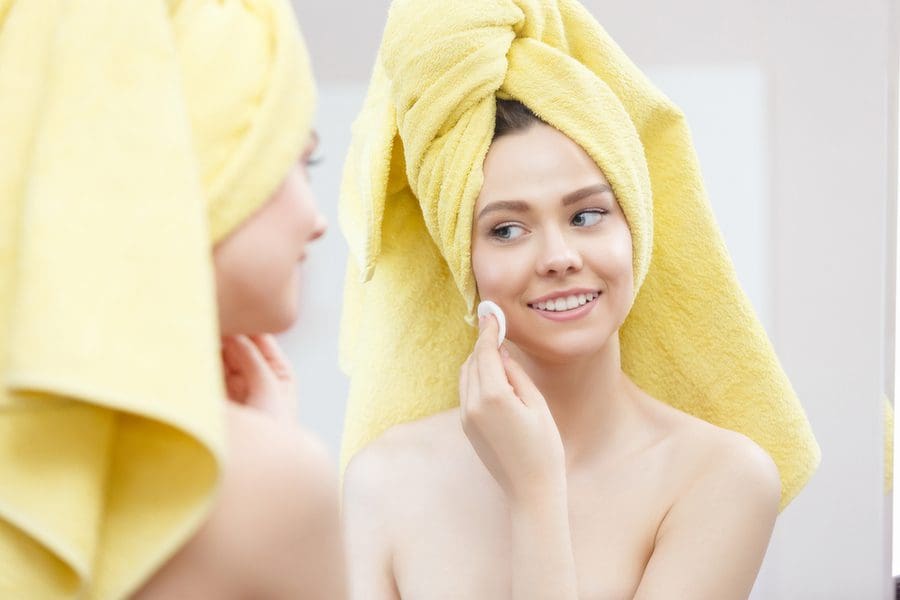A good skin care regimen is crucial when you are battling acne. You may wonder, can your facial cleanser really make a difference? While the right face wash can definitely help, the wrong one may further aggravate your acne. It is important to consider the type of cleanser you use, but also to understand that dermatologists are divided on what works best, so you may need to do some testing of your own. Some dermatologists advise to look for active ingredients, while others advise seeking out the gentlest cleanser you can find. There is one thing most experts agree on: choosing the cleanser that works best for you is only half the battle.
Some dermatologists swear by facial cleansers for acne that contain either salicylic acid, glycolic acid, or benzoyl peroxide. They say these ingredients get rid of pore-clogging impurities that irritate skin and make acne worse. These are key ingredients that will penetrate your pores and clean out excess oil and bacteria, dead skin cells, and makeup. Sometimes this can be a gradual process if there’s a lot of buildup.
Other dermatologists say the dose of salicylic acid or benzoyl peroxide in a medicated face wash is teeny tiny and won’t do much to treat your breakouts. An acne cleanser that stays on your face for 10 seconds is not going to make a significant impact on your pimples. This group of dermatologists say those ingredients may wash away some surface-level oils, but they contend that prolonged use can trigger extra breakouts of rashes, irritation, redness, and oil. They advocate a cleansing formula that omits benzoyl peroxide and salicylic acid and is bland, creamy, and—most of all—gentle.
Skip abrasive scrubs and drying sulfates.
Here’s where the two camps do agree. Both groups caution against using harsh, abrasive manual scrubs that can irritate the skin. Scrubs, at best, don’t help, and at worst, can even inflame acne.
Watch out for acne face washes that are filled with sulfates. Sulfates produce the sudsy, foamy lather that feels as though your face wash is really working, but sulfates are the same rough detergents you would find in dishwashing soap. They leave your skin dry, and stripping away moisture and messing with your skin’s barrier will prompt your skin to produce too much oil.
The unfortunate results may include oily skin, clogged pores, blackheads, and breakouts. See if one of the first ingredients on your cleanser’s label is a sulfate. Be extra careful to avoid these three: ammonium lauryl sulfate, sodium lauryl sulfate, and sodium laureth sulfate, but make sure you don’t confuse these culprits with similarly named ingredients that do no harm. There’s no need to scratch cleansers that contain ingredients ending in sulfoacetate, sulfosuccinate, and sarcosinate off your shopping list.
The right way to wash acne-prone skin.
While a facial cleanser designed for acne-prone skin is a good tool to have in your skin care arsenal, finding the right one is only half the battle. The other half is properly washing your face. Dermatologists recommend washing your face twice daily, morning and evening, to cleanse and deliver acne-fighting ingredients to your skin thoroughly. Also, wash after exercising. Cleansing your face at night is especially important so that you don’t sleep with a day’s buildup of dirt, oil, makeup, and pollution. Cleansing before bedtime will also keep your dirty face off the pillowcase, which can prevent further aggravation of your acne.
First, wet your face with warm water, then apply cleanser and work up a lather. Depending on your skin type, use your fingers, an exfoliating cloth, or a sonic skin-cleansing brush system. Let the cleanser remain on your skin while you sing the alphabet. This ensures enough contact time to allow any active ingredients to do their jobs. Rinse your skin with warm water to remove all the cleanser’s foaming lather and built-up oil, dead cells, products, and bacteria.






